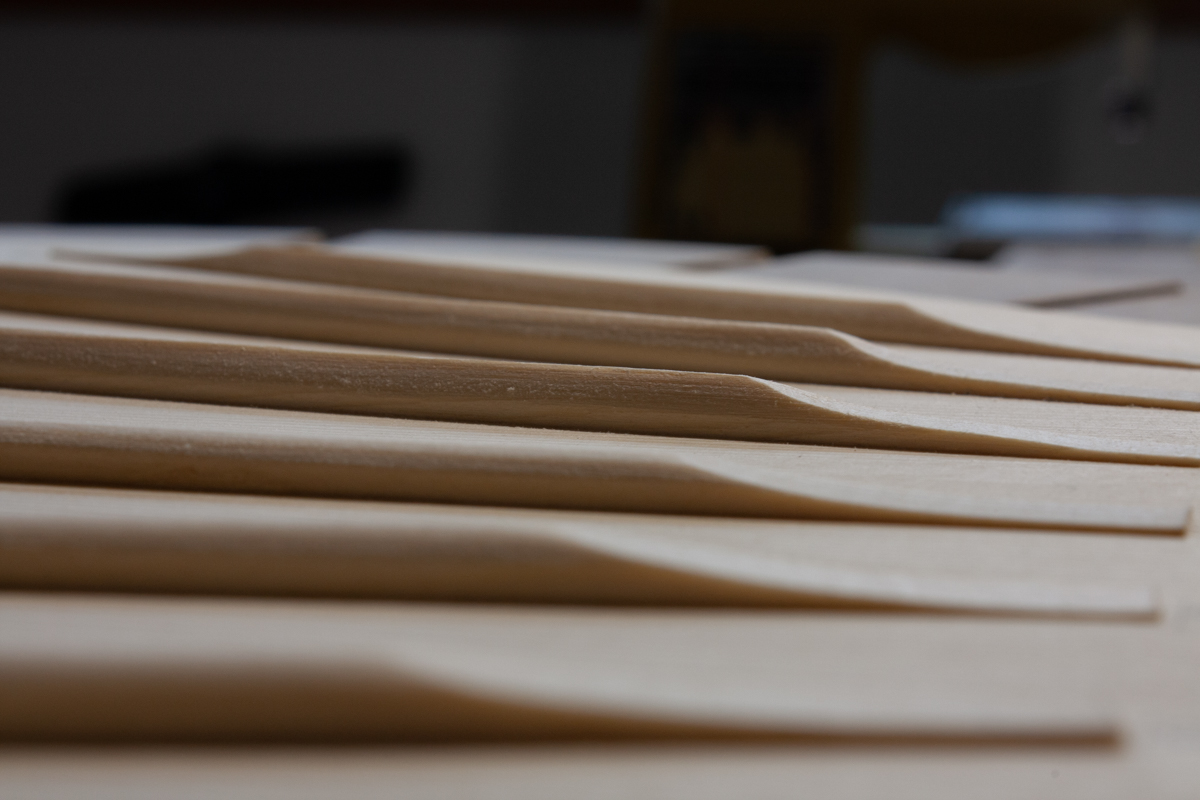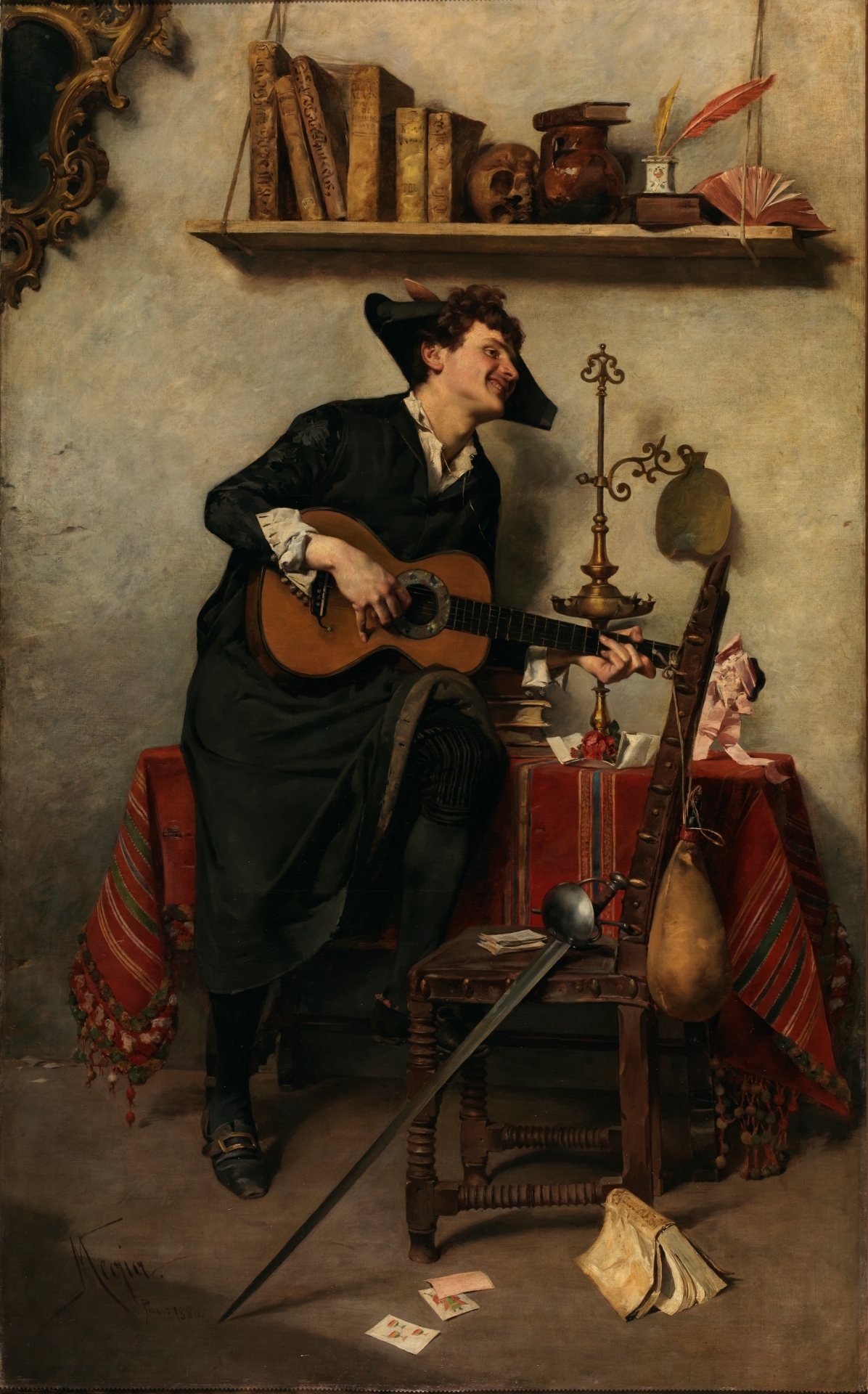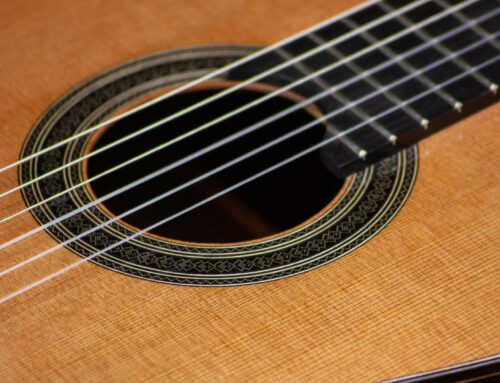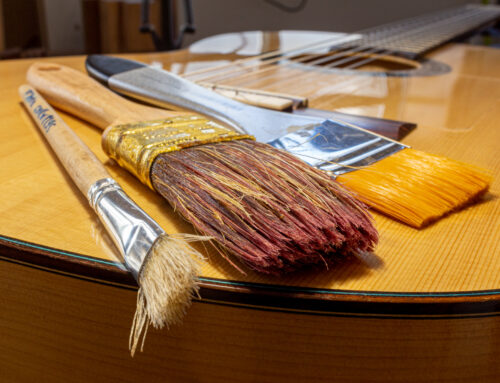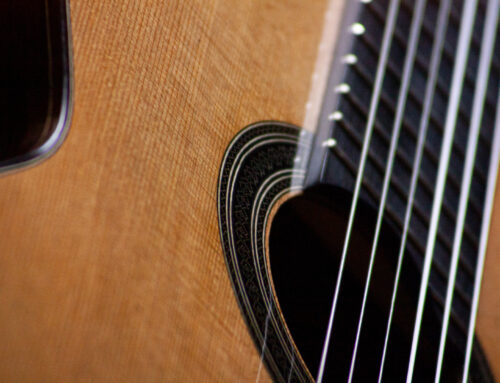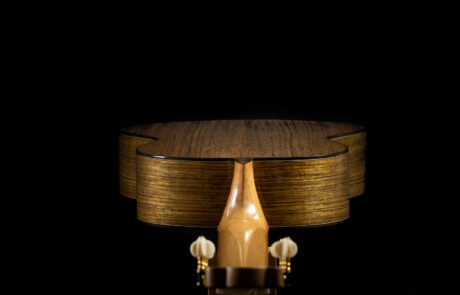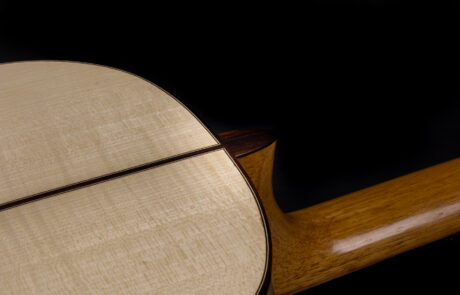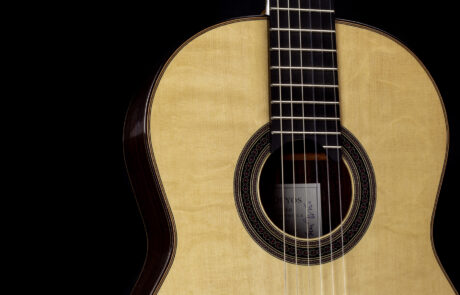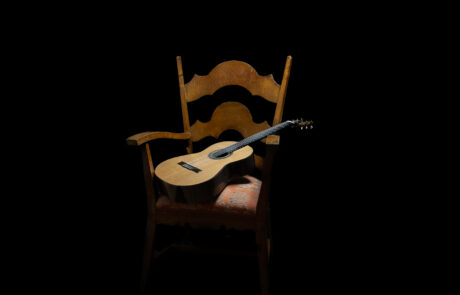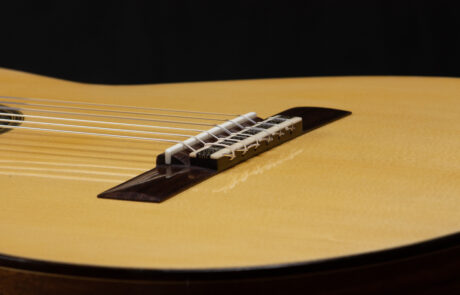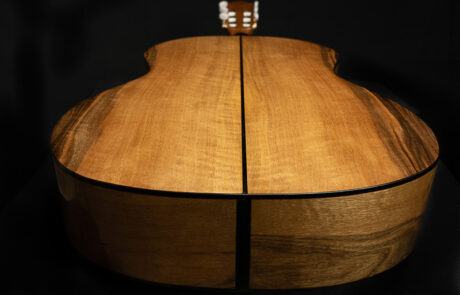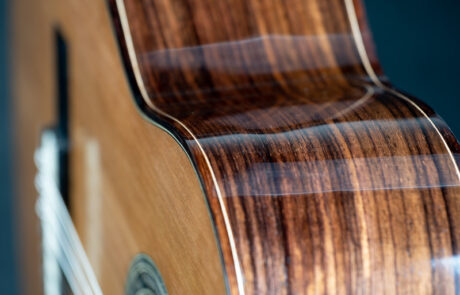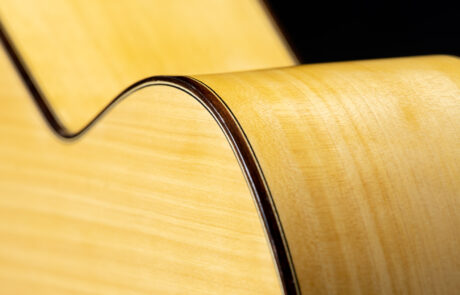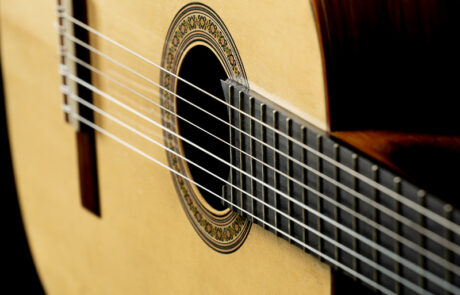Contents on this post
If you insert a mirror or even your own cell phone inside your guitar, you’ll see that the top is filled with a series of wooden bars glued here and there. That’s the bracing. Its function is both structural and acoustic and it is key in defining the sound of the instrument. In this article I will try to explain what is the bracing and why it is interesting for you to know its importance when ordering your handmade guitar.
The origin of bracing as a solution to a problem
I do not intend to be excessively rigorous with the historical question, but if you look at paintings from the 19th century and earlier, you will see that the guitars that appear are much smaller than they are today. In this painting by Megía Márquez is represented what we know today as romantic guitar, although at that time, this type of guitars were simply called guitars.
It turns out that in those times, and thanks to the work of composers such as Fernando Sor or Tárrega himself, the guitar began to be considered as a solo instrument. This was something unprecedented until then, since the guitar had always been the discreet accompaniment for singing, especially in popular environments. But things began to change, and thanks to the Parisian circles of influence, around the middle of the 19th century the works written for solo guitar proliferated, making it an instrument that deserved prominence in its own right.
Thanks to this fact, guitar concerts began to be organized in larger and larger concert halls. If the guitar itself is an instrument with little sound power, the problem was served. So these guitar concerts in larger and larger halls made it necessary to invent an instrument that could be heard well from the back rows of the auditoriums.
The solution to the problem
This is how a beautiful creative “tug-of-war” between guitarists and luthiers took place, in order to overcome the instrument’s lack of natural power. And this is where the genius of Antonio de Torres and the guitar makers of his generation were key to defining the instrument as we know it today.
The solution seemed to be to increase the size of the soundboard, while maintaining a thin enough soundboard so as not to lose expressiveness. The problem? Increasing the size of the soundboard could very well lead to the collapse of the soundboard, due to the tension of the strings on a considerably larger vibrating surface.
At the same time, the soundboard, connected to the bridge, is the most acoustically active part of any stringed instrument. That is why softwoods such as spruce or cedar are chosen for this part, whose responsiveness is more complete at all frequencies that a guitar is capable of producing. Thus, increasing the size of the soundboard could lead to the temptation of leaving a thicker top, precisely to avoid its collapse. But that solution was a shot in the waterline of the acoustic “engine” of the guitar, i.e. the soundboard.
This is how the idea of maintaining a very thin top arose, but incorporating a series of small bars as reinforcements that would bring the instrument to a point of balance. The truth is that the installation of the struts is not original to Antonio de Torres, and we find examples of guitars that add this constructive idea in guitar makers previous to Torres, as in the case of the Pagés brothers, or even in guitars by Lacotte or Louis Panormo. What we do owe to Torres and his generation is to have achieved this point of balance with a guitar of a considerably larger size.
Torres’ intuition was therefore to arrange 7 symmetrical truss rods forming a fan in the larger lobe of the guitar and two shorter ones, crossed, at the lower end of the instrument. This is how to obtain a stable, powerful and expressive instrument at the same time.

Antonio de Torres’ typical bracing design
Those Torres guitars were a before and after. They did not sound the same. Besides being able to reach more sound volume, those instruments had deeper basses, new nuances in the treble: in short, it was modernity in its purest state. I can imagine the endless discussions between haters and fans of that new “apparatus”. Something similar perhaps to what happens today with double top guitars, whose history is not far from the one we are dealing with today. This proves, once again, that a certain obsession with volume is an endemic evil of classical guitarists.
Bracing as a way of “sculpting” sound
However, it seems that the “invention” was not merely a structural question. Torres was able to intuit that the way in which the struts were arranged inside the soundboard gave a new opportunity to the luthier to “mold” the sound of the guitar, forcing the soundboard to create vibratory nodes that could perfectly alter the acoustic character of the instrument.
Thus, today it seems to be accepted that adding stiffness reinforces the treble, while removing it adds bass. In addition to the calibration of the soundboard itself according to this logic, the placement, thickness and shape of the rods is crucial in the design of the acoustic character of the instrument.
So, since Torres, this logic has been mostly implemented among luthiers, who are potentially able to adapt to the needs of the player. I say potentially because the guitar maker’s work always has a component of trial and error, which gives experience and the ability to intuit the right way to get the sound the musician wants.
There are dozens, hundreds of different wailing designs. We would say that each luthier has his own. Some schemes have become very popular, such as Torres’ own, which is present in most industrially manufactured guitars. Other relevant makers such as Friederich, Bouchet or Romanillos have implemented their variations, which are almost always based on the famous Torres fan.

